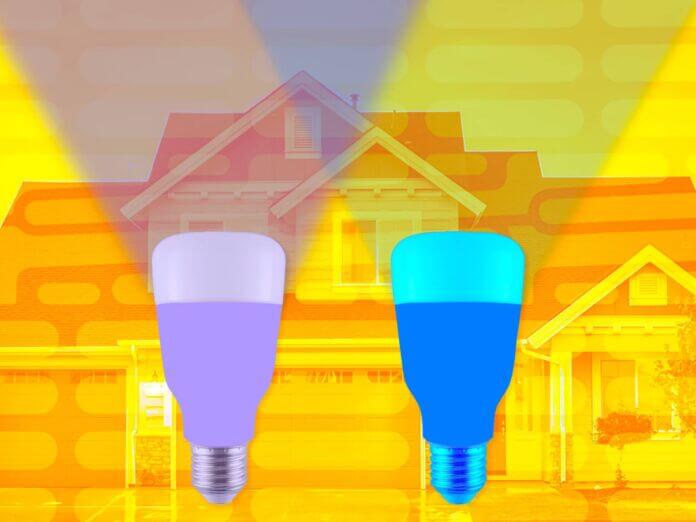
Smart homes are the residences of the future, outfitted with appliances, security, and lights with remote monitoring and control. Their popularity grows because of how much they streamline homeowners’ lives. It saves money by automating air conditioning and reduces stress by notifying them if someone unexpected is at the door. Smart homes appear smart because of what they tout on product boxes, but how smart and secure are they in practice?
Comparing Evolving Smart Homes
Smart home devices are becoming more ubiquitous, and they will only become more popular as the United States government bans the sales of incandescent light bulbs. An LED’s longevity and energy efficiency make it last 40 times longer than an incandescent. This transition to LED bulbs may lead many consumers to purchase smart bulbs, which are popular due to their aesthetic appeal and convenient functionalities. For many, this will be the start of their smart home.
Smart homes have come a long way in recent history. Their degree of “smartness” is different from what it used to be, as every year brings new improvements to security, capabilities, and overall infrastructure. Understanding just how smart these homes are requires context on their historical development.
Smart homes started surprisingly early. In 1975, X10 products arrived as the first insight into home automation. The X10 protocol sent radio signals that contained digital information through electrical wiring. It used a remote transmitter and control hub to control one lamp and appliance. These days, it’s hard to imagine only having control over a single device when smartphones enable us to manipulate numerous smart devices with ease.
Smart tech would eventually begin learning on its own. Companies like Apple and Google utilized data collection and artificial intelligence to power everything from virtual assistants to thermostats. The more it understood, the more the technology curated individual behaviors and trends. Instead of radio waves, Bluetooth, RFID, LPWAN, and WiFi (among others) connect everything.
Smart tech’s versatility and connectivity options justify why experts project over 93 million households will have smart tech by 2027, including smart versions of:
- Garage doors
- TVs
- Landscaping and lawn care
- Security systems and door locks
- HVAC systems
- Windows and blinds
- Refrigerators
- Outlets
- Air quality monitors
- Mattresses
- Mirrors
- Fireplaces
A Look Inside the Modern Smart Home
Smart devices execute automation, lightening administrative burdens for families and adding a new level of customization to their homes. Thermostats automatically adjust the temperature when the house is unoccupied, saving money. The refrigerators reveal how much energy they pull each day, notifying families of any changes for necessary repairs. Every device is customizable to accommodate individual operational preferences, improving household energy efficiency and financial wellness while designing a personalized home environment.
It also provides peace of mind. For example, people can keep an eye on older family members living independently. Smart systems connect and can notify loved ones in an emergency or unexpected change in the home’s condition.
However, these benefits sometimes overshadow how smart homes are not the smartest in specific scenarios. Security and data privacy is the most evident drawback, despite efforts from regulatory bodies and smart device manufacturers.
Hackers find backdoors into these types of IoT devices regularly, stealing and manipulating user data for their gain. IoT devices use facial and vocal recognition to store user-input data, which is all up for grabs. This becomes more frequent when integrating different brands of IoT devices — the inconsistency of security and compatibility across brands can create vulnerabilities.
The learning curve associated with learning smart home devices may contribute to more frequent cases of compromised security, as digital hygiene with these products is not common knowledge for most consumers. Ultimately, consumers and lawmakers must combine forces to reinforce digital defenses in smart home tech.
Future Trends
Refining regulations and standards for IoT products is the top priority for streamlining development and phasing out the cons within smart home technologies. The intelligence of a smart home impacts entire cities, and therefore entire nations. Smart cities leverage many of the same tools as single residences, meaning any oversight in security or evident inefficiency translates to city and citizen wellness and safety. Compliance updates and legislation will dominate the smart home and IoT conversation in the future — unlocking smarter devices.
Smart homes will become smarter when they embrace the safe incorporation of artificial intelligence. The data collected by these devices can help societies worldwide, but there is a financial and emotional cost associated with this. AI integration is the key to smarter smart home devices, but education is paramount for justifying the expense. If users do not know how to use the tech and can’t understand what it’s doing, it could put them at risk.
Bolstering defensive walls across brands and devices is critical. However, genuine resilience can only happen once makers fix connectivity concerns. Decked-out smart homes require a strong internet connection to keep critical appliances running.
Previously, an electrical outage was the only concern for homes putting devices out of commission. All the lights could be on, yet nothing will work if the internet is down. How smart can smart homes be if they are so reliant upon a single contingency? Finding a solution is essential, especially in a world battered by countless unpredictable weather events and cyberattacks on critical infrastructure.
Normalizing Smarter Smart Homes
With the sunsetting of incandescent bulbs, there will likely be an increase in the purchase of smart home devices. Governments will prioritize sustainable products worldwide as they swiftly attempt to reduce footprints. Lawmakers will likely use these motivations to inform subsequent decisions.
Smart bulbs will be the first introduction to the game for many, and it is essential to understand the drawbacks alongside the potential of smart home devices.
Tweet
Share
Share
- Automation
- Smart Home Automation
- Consumer Products
- Device Management
- Smart Building
- Automation
- Smart Home Automation
- Consumer Products
- Device Management
- Smart Building
